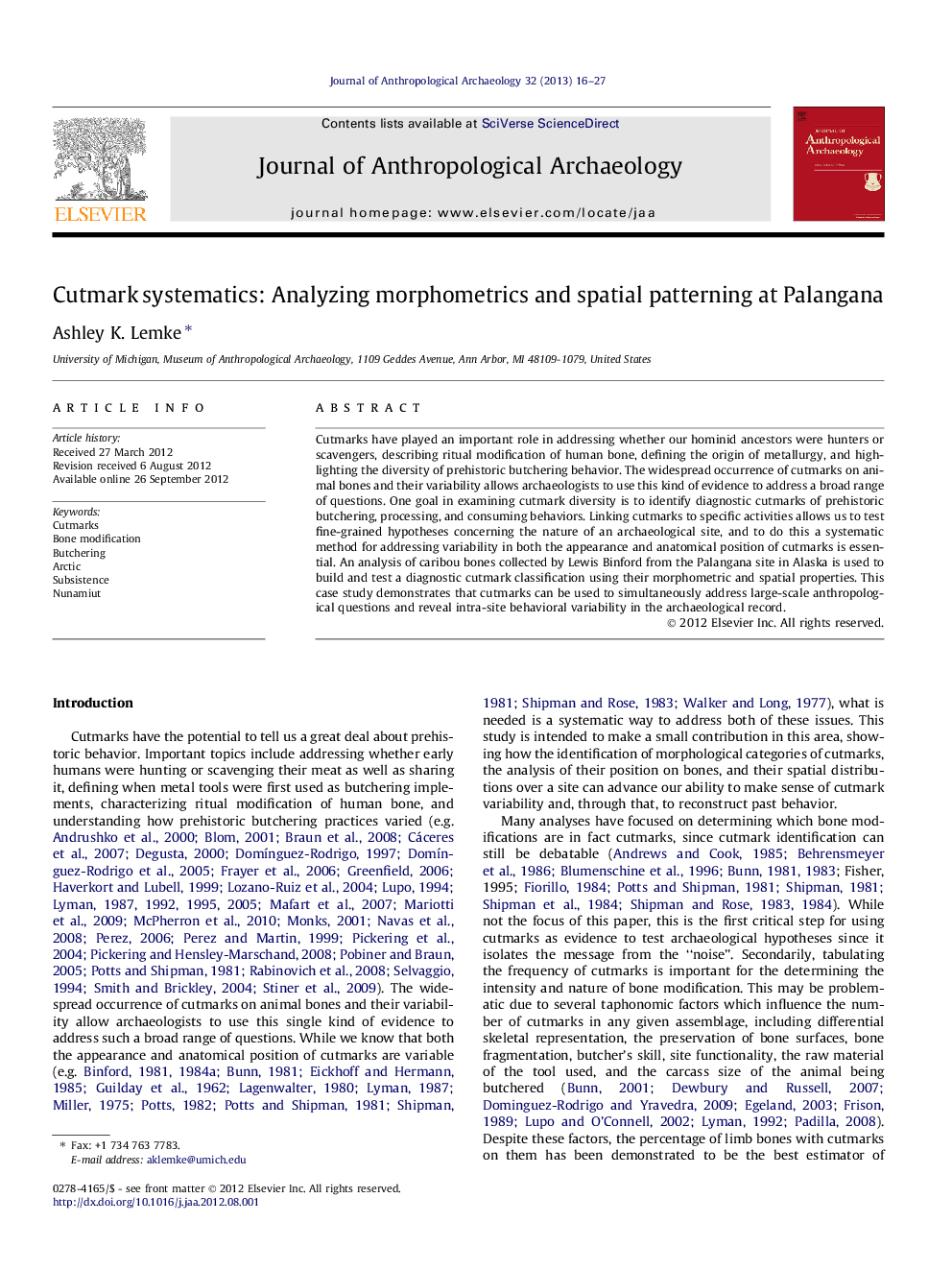| Article ID | Journal | Published Year | Pages | File Type |
|---|---|---|---|---|
| 1034977 | Journal of Anthropological Archaeology | 2013 | 12 Pages |
Cutmarks have played an important role in addressing whether our hominid ancestors were hunters or scavengers, describing ritual modification of human bone, defining the origin of metallurgy, and highlighting the diversity of prehistoric butchering behavior. The widespread occurrence of cutmarks on animal bones and their variability allows archaeologists to use this kind of evidence to address a broad range of questions. One goal in examining cutmark diversity is to identify diagnostic cutmarks of prehistoric butchering, processing, and consuming behaviors. Linking cutmarks to specific activities allows us to test fine-grained hypotheses concerning the nature of an archaeological site, and to do this a systematic method for addressing variability in both the appearance and anatomical position of cutmarks is essential. An analysis of caribou bones collected by Lewis Binford from the Palangana site in Alaska is used to build and test a diagnostic cutmark classification using their morphometric and spatial properties. This case study demonstrates that cutmarks can be used to simultaneously address large-scale anthropological questions and reveal intra-site behavioral variability in the archaeological record.
• Cutmark anatomical and spatial patterning. • Classification of cutmarks based on morphometric attributes. • Arctic patterns of storage, butchering, and consumption. • Archaeology of hunter–gatherer subsistence and food storage.
